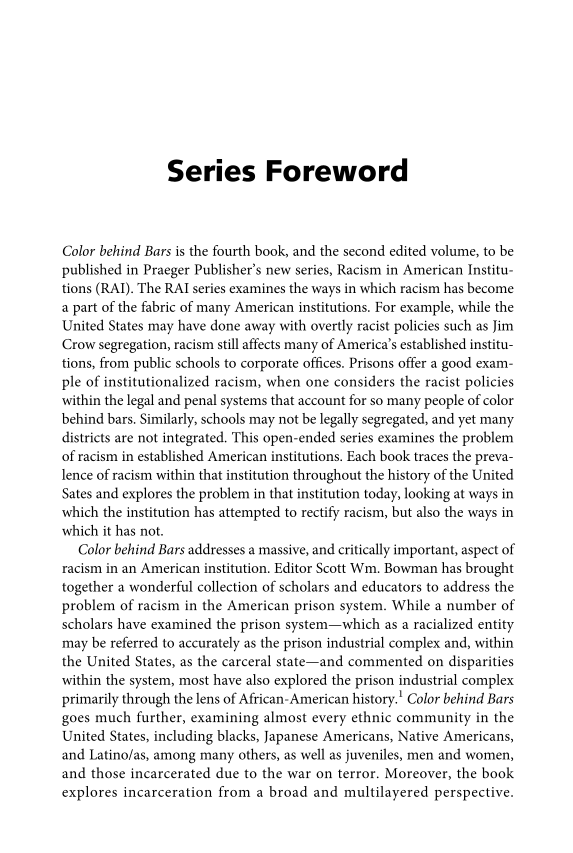Series Foreword Color behind Bars is the fourth book, and the second edited volume, to be published in Praeger Publisher’s new series, Racism in American Institu- tions (RAI). The RAI series examines the ways in which racism has become a part of the fabric of many American institutions. For example, while the United States may have done away with overtly racist policies such as Jim Crow segregation, racism still affects many of America’s established institu- tions, from public schools to corporate offices. Prisons offer a good exam- ple of institutionalized racism, when one considers the racist policies within the legal and penal systems that account for so many people of color behind bars. Similarly, schools may not be legally segregated, and yet many districts are not integrated. This open-ended series examines the problem of racism in established American institutions. Each book traces the preva- lence of racism within that institution throughout the history of the United Sates and explores the problem in that institution today, looking at ways in which the institution has attempted to rectify racism, but also the ways in which it has not. Color behind Bars addresses a massive, and critically important, aspect of racism in an American institution. Editor Scott Wm. Bowman has brought together a wonderful collection of scholars and educators to address the problem of racism in the American prison system. While a number of scholars have examined the prison system—which as a racialized entity may be referred to accurately as the prison industrial complex and, within the United States, as the carceral state—and commented on disparities within the system, most have also explored the prison industrial complex primarily through the lens of African-American history.1 Color behind Bars goes much further, examining almost every ethnic community in the United States, including blacks, Japanese Americans, Native Americans, and Latino/as, among many others, as well as juveniles, men and women, and those incarcerated due to the war on terror. Moreover, the book explores incarceration from a broad and multilayered perspective.
Document Details My Account Print multiple pages
Print
You have printed 0 times in the last 24 hours.
Your print count will reset on at .
You may print 0 more time(s) before then.
You may print a maximum of 0 pages at a time.
















































































































































































































































































































































































































































































































































































































































































































